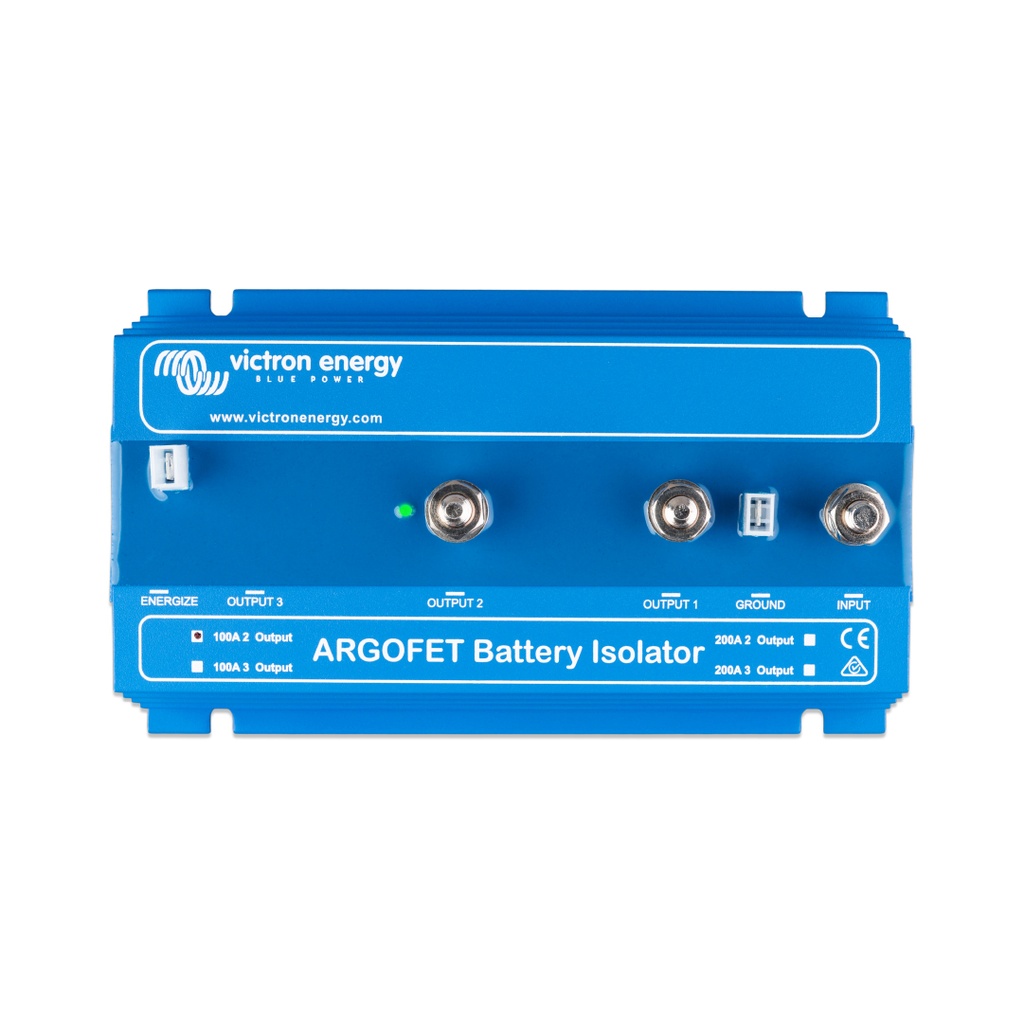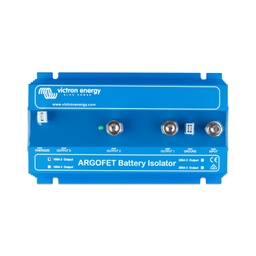







Features:
• Allows Simultaneous Charging of Two Batteries from One Alternator
• 100Amp
• Suits 12V & 24V Systems
| Brand: Victron |

Similarly to diode battery isolators, FET isolators allow simultaneous charging of two or more batteries from one alternator (or a single output battery charger), without connecting the batteries together. Discharging the accessory battery for example will not result in also discharging the starter battery.
In contrast with diode battery isolators, FET isolators have virtually no voltage loss. Voltage drop is less than 0.02 Volts at low currents and averages 0.1 Volts at higher currents.
When using ARGO FET Battery Isolators, there is also no need to increase the output voltage of the alternator. Care should be taken however to keep cable lengths short and of sufficient cross-section.
Example:
When a current of 100A flows through a cable of 50 mm2 cross section (AWG 0) and 10m length (30 ft), the voltage drop over the cable can be 0.26V. Similarly, a current of 50A through a cable of 10 mm2 cross section (AWG 7) and 5m length (15 ft) can result in a voltage drop of 0.35V.
Alternator Energise Input:
Some alternators need DC voltage on the B+ output to start charging. DC electricity will be present when the alternator is directly connected to a battery. Inserting a Diode or FET splitter will however prevent any return voltage/current from the batteries to the B+, and the alternator will not start. The new ‘AC’ diode isolators feature a special current limited energize input that will power the B+ when the engine run/stop switch is closed.
More about Victron:
Victron Energy has a strong, unrivalled reputation for technical innovation, reliability, and build quality. Their products are widely considered to be a professional choice for independent electric power. Efficiently combining two or more distinct power sources is what they do best. Their products include sinewave inverters, sinewave inverters/chargers, battery chargers, DC/DC converters, transfer switches, battery monitors and more.
| Brand | Victron |
Product Specification
| Maximum charge current (A) |
100
|
Maximum alternator current (A)
|
100
|
Number of batteries
|
2
|
Nominal battery voltage
|
12V and 24V
|
Connection
|
M8 bolts
|
Weight |
1.4kg |
Dimensions:
| 65 x 120 x 200mm |
